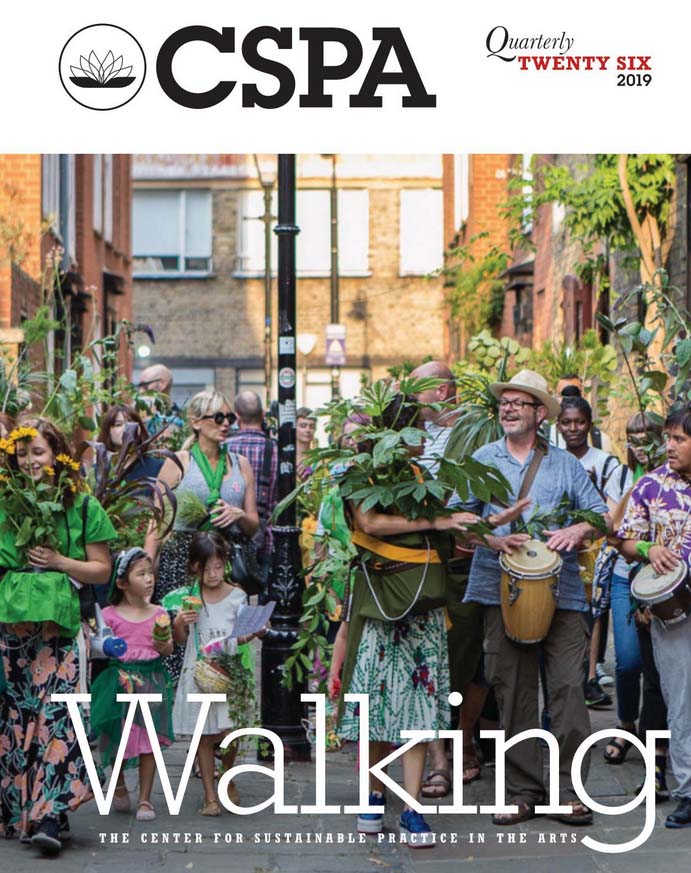
The Center for Sustainable Practice in the Arts, Issue 26 (2019) – Cover image: “Plantón Móvil” by Lucia Monge, Photo by Rob Harrist
As part of the run up to the hardcover release of my book, Walking as Artistic Practice (softcover comes out in April!), I’m going to be publishing some brief interviews with the various artists, authors, researchers, creatives, collectives, and platforms whose art practice, written material, or other works I cite and mention.
My second interview in this series is with Meghan Moe Beitiks (she/they), who works with associations and disassociations of culture/nature/structure. She analyzes perceptions of ecology though the lenses of site, history, emotions, and her own body in order to produce work that examines relationships with the non-human. The work emerges as video, performance, installation, writing or photography depending on what arises from her process of research and improvisation.
EM: First, thank you for chatting with me about your writing, “End Notes,” in issue 26 of The Center for Sustainable Practice in the Arts. I cite your description of walking in chapter three (Observational Walking) in the subsection on “The Everyday.” You point out, “Walking is not always a beautiful, existential meditation on nature, wellness and place. It is sometimes long, boring, and painful, and those, too, are generative experiences.” How would you describe the context for this statement for people who might not be familiar with it?
MMB: As the Lead Editor of the CSPA Quarterly, I often take a moment in the “End Notes” of a given issue to reflect upon the content of an issue– in this case, Clare Qualmann’s “Walking” issue (Q26). These reflections often combine my own experience with the content of the issue– so in this quote I’m reflecting both on my own experiences of walking practices, and on the incredible collection of articles and artist contributions that Claire amassed, which include many honest accounts of walking experiences. I think it’s important as artists to embrace the power of discomfort– safely guiding audiences and participants through uncomfortable moments to new possible reflections.
EM: What are your thoughts on walking as artistic practice?
MMB: I think that within my lifetime it’s gone from an unidentified conceptual form to something that has its own genre. I think a lot of people appreciate an excuse for a good walk ;), but also that attentive walking has a reliable capacity to calm us and attune us to our surroundings.
EM: You are also an author and designer; can you tell us about any recent or upcoming projects you are excited about?
MMB: I published my own book last year, Performing Resilience for Systemic Pain, about performance, trauma, materiality and systems thinking. In future artistic projects I’m working a lot with mirrors and reflected sunlight. I just moved to Canada so I’m still acclimating to the community and trying to see how my design supports the dialogue here. I’m on instagram @